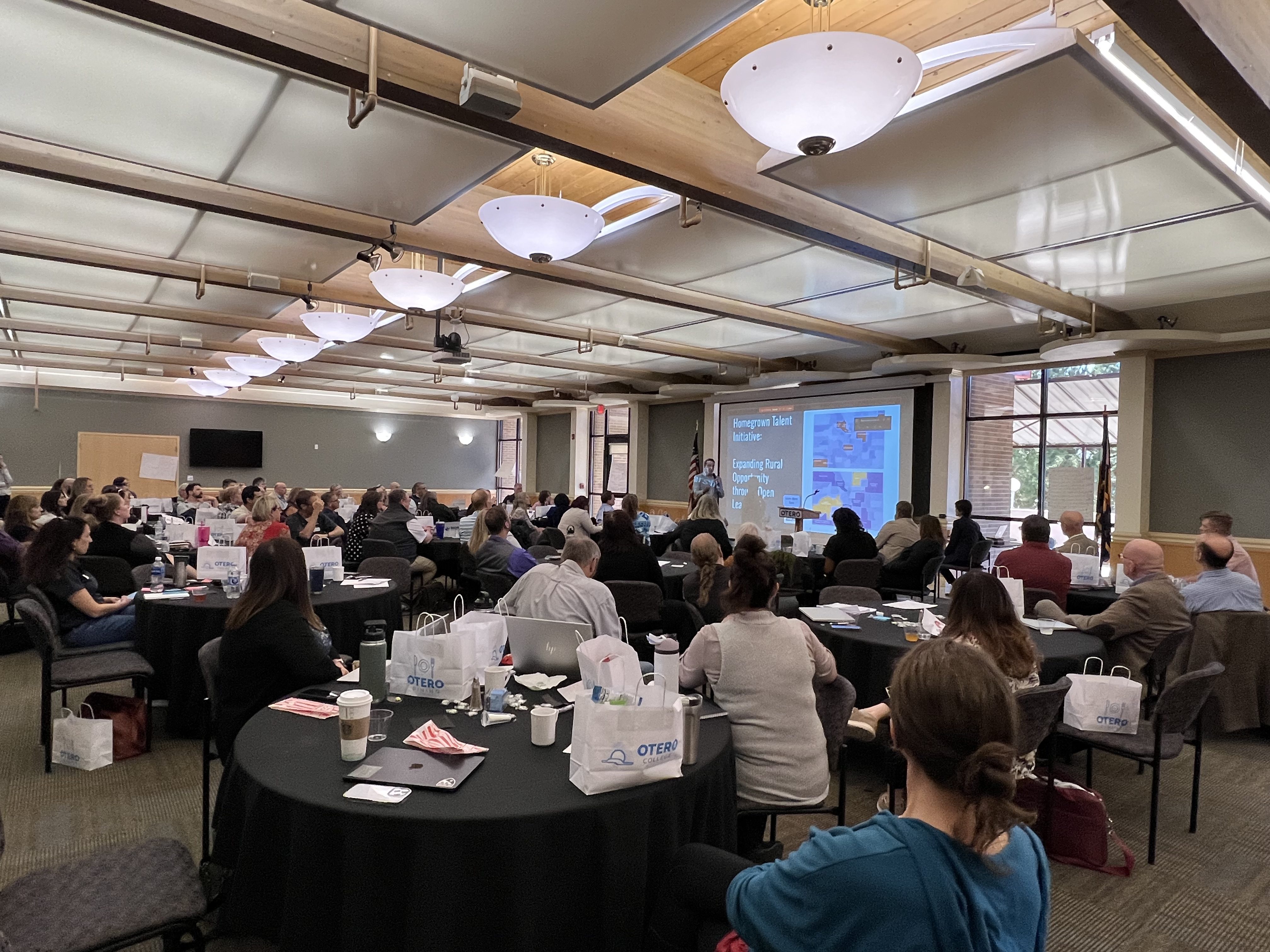As Congress considers increased funding for Minority-Serving Institutions, CCCS continues to make diversity a priority
Diversity in higher education is not simply about enrollment – for the Colorado Community College System, it is a core component of our mission to support the growing minority populations throughout the state.
According to a Bell Policy Center report earlier this year, racial and ethnic minorities are expected to comprise nearly half of Colorado’s population by 2050, with Hispanics representing 35%. Hispanics also represent the fastest-growing demographic in the state, accounting for more than 60% of Colorado’s anticipated working-age growth over the same span. This continues a trend by which Hispanics were responsible for half of the nation’s overall population growth since 2000.
Higher education has seen similar movement, as Hispanic college enrollment in the U.S. increased from 8% to 19% of all students between 1996 and 2016, and Hispanic enrollment in Colorado nearly doubled.
Hispanic-Serving Institution is More Than a Title
The Colorado Community College System is uniquely positioned to not only meet the demands of this rapidly growing demographic, but also to fuel its growth and success for years to come. Of 13 CCCS colleges located across the state, 6 are recognized as Hispanic-Serving Institutions – a designation given to colleges with at least 25% Hispanic enrollment. Two others – Lamar Community College and Pikes Peak Community College – aspire to reach that enrollment mark in the next few years.
“Being a Hispanic-Serving Institution is a responsibility to our community as much as it is a statement about the make-up of our student body,” said Morgan Community College President Dr. Curt Freed. “Nearly half of Fort Morgan’s population is Hispanic. It is a priority for MCC to ensure that the people and businesses within our service area are both represented and supported as they pursue a better future.”
In 2016-2017, there were 492 Hispanic-Serving Institutions in the United States – more than triple the count from a decade earlier. Currently, CCCS serves 48% of Colorado’s undergraduate students of color, and 21% of the students at its 13 colleges are Hispanic.
Being a Hispanic-Serving Institution is a responsibility to our community as much as it is a statement about the make-up of our student body.
Legislation to Broaden Minority-Serving Institution Support is in the Works
Despite projections of continued growth in minority populations across the United States, federal funding for higher education institutions that prioritize serving minorities has not kept up. That’s why U.S. Senator Michael Bennet cosponsored the Strengthening Minority-Serving Institutions Act alongside 26 other senators last month. If passed, the bill would provide an additional $75 million in nationwide funding to these colleges and universities, supporting capital projects, faculty and curriculum development, and student services that would go a long way toward reaching student success goals across all demographics.
“Senator Bennet is a strong voice for us in Washington, and we commend this legislative initiative,” said Joe Garcia, president of CCCS. “Our economy depends on our ability to evolve and meet the needs of the changing student population. The number of HSI’s will continue to grow as we find new ways to bring Hispanic students to and through our colleges.”
How CCCS Rises to Support Minority Students and Communities
In the meantime, CCCS is working tirelessly to meet the current needs of all Colorado students, which means a targeted approach to closing the equity gap in credential attainment between white and Hispanic students.
This involves a variety of programs and support services that encourage Hispanic high school graduates to apply for college and support them while they work toward higher education outcomes.
At Community College of Denver, which services a student population almost 30% Hispanic, a $3 million grant from the Department of Education is allowing the College to provide individualized support to Hispanic and low-income students pursuing careers in science, technology, engineering, and mathematics (STEM). The CCD website is also translatable into six languages, including Spanish.
Community College of Aurora offers scholarships, supports affinity groups, and has developed an Inclusive Excellence program to promote diversity, equity, and a sense of belonging at all levels of engagement with the College. Several areas of CCA’s website provide information about programs and services for Hispanic students, offer side-by-side Spanish translations.
Our economy depends on our ability to evolve and meet the needs of the changing student population. The number of HSI’s will continue to grow as we find new ways to bring Hispanic students to and through our colleges.
Colleges in rural areas often face unique challenges in supporting minority groups. In Fort Morgan, MCC has broadened its support programs to include special financial aid and guidance for DREAMers (students protected by Deferred Action for Childhood Arrivals, or “DACA”), scholarships that assist students pursuing STEM careers, and other efforts to improve college accessibility for its community.
Pueblo Community College, where Hispanic enrollment has been over 25% for more than 30 years, received a $2.4 million grant from the Department of Education earlier in October. The funding will enable the College to increase retention and graduation rates through expanded support services for minority students.
Another way that CCCS and its colleges create opportunities for Hispanic students is through concurrent enrollment programs, in which students can earn college credits at no cost while pursuing a high school diploma. 24% of the 25,513 high school students enrolled at CCCS colleges in 2016-2017 were Hispanic. Thanks to CCCS-backed legislation this year, concurrent enrollment programs will continue to gain momentum in high schools across the state, providing more opportunities for Hispanic students to achieve higher education goals with drastically reduced cost barriers.
The work of the Colorado Community College System to develop programs and services that promote diversity and inclusiveness that is representative of the unique racial and ethnic makeup of the state is just beginning. As the minority populations of our state continue to grow, so too will our efforts to meet their needs so that every student – regardless of race, income, first-generation status, gender, or religion – has equal opportunity and access to the credentials they require to pursue a rewarding career and lifelong learning.
Learn more about our Hispanic-Serving Institutions by visiting their official websites.


